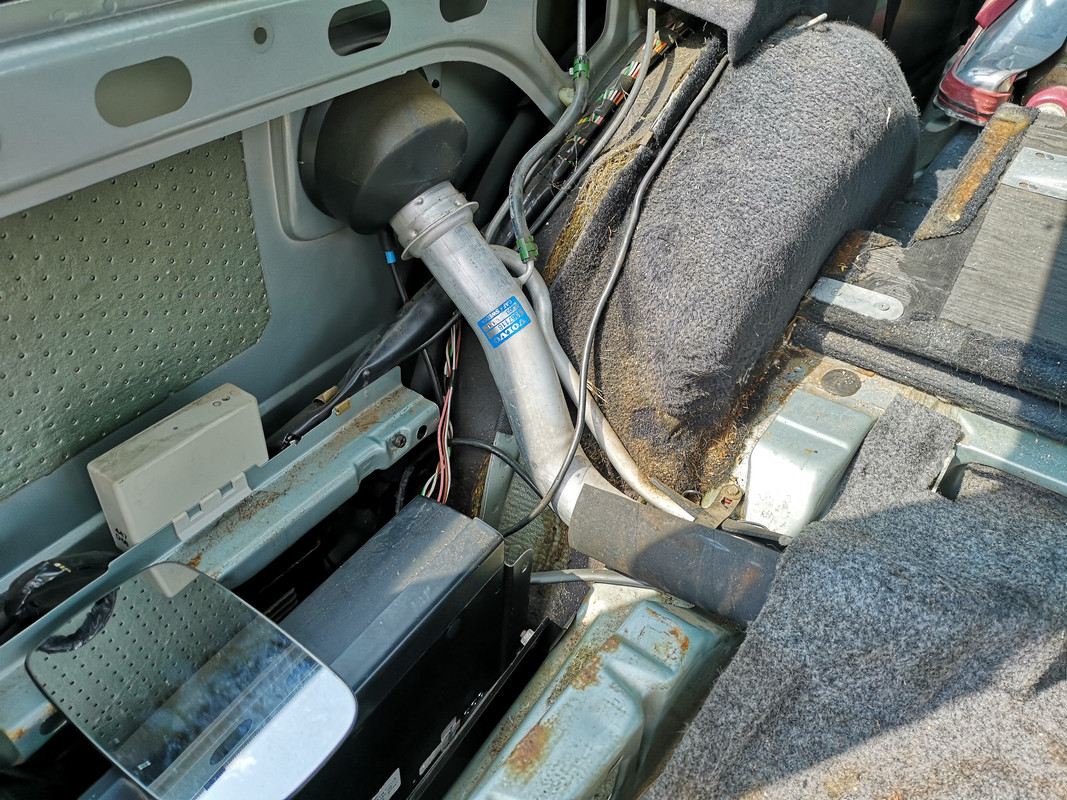Open the tailgate and remove the left hand cubby hole cover between the wheelarch and D-pillar - should be a loop at the front end to make life easy for this.
Find the 3-way connector, this feeds the fuel pump and brings the sender output back. The two wires you're intersted in are pink and brown on the tank side of the connector. Back probe these with the +ve of your meter in the pink and the -ve of your meter in the brown. For 1-2 seconds when you first turn the key to position 2 you should see battery voltage and then also during cranking and for 1-2 seconds after.

You can see the pink and brown wires (with a grey one) more or less centrally)
If not, suspect fuses 1, 11 and the fuel pump relay.
The fuel tank is plastic so doesn't rust and also helps towards the use of E10 fuel - i'd still recommend using 98 octane super unleaded (E5) fuel though as these engines run better on it.
To check the spark, remove one of the plugs and clamp it to a convenient earth point on the hex, refit the HT lead and crank the engine. A strong blue/blue-white spark should be seen and if close enough, heard.
If not, remove the dizzy cap and inspect inside. There may be corrosion on the terminals, clean it off. Also check the carbon brush in the centre of the cap, should be about 10mm long and free to move in and out on its spring - don't pull it out as you'll never get it back!

If all is good so far, connect your multimeter to a good earth point with the -ve probe, set on 20V range and peel back one of the rubber boots on one of the injectors. Backprobe the green and turn the ignition on and then crank the engine - you should have battery voltage during this. If you have a NOID light, connect it to the injector and make sure it pulses as you crank the engine.
Assuming you have a spark and the injectors are getting the supply they need, after a period of cranking, remove one of the plugs. If it's completely dry you're not getting fuel for some reason. Prove this by using some Easystart in the air intake while cranking. It should fire up. However before you do that, it might well be worth removing all 4 plugs and dribbling either some engine oil or synthetic ATF into the plug holes. Leave it to soak for half hour or so then put rags over the plug holes to catch the oil and spin it over on the starter until the oil stops coming out. Refit the plugs and try starting it.
It may be the rings have dried out due to lack of use and as such, you're not getting proper compression so any fuel will just get blown by the rings into the crank case, hence the oil in the bores trick.
Give these things a try and if it's still a no-go (FTP - Fail To Proceed) let us know your findings and we can narrow it down some more.

PS it could be the CPS, located on top of the bellhousing if there's no spark - worth a visaul inspection of the wiring to it!

Location ^^^^^

What the wiring should look like ^^^^^

What the wiring usually looks like on a knackered one! ^^^^^
Bear in mind mine is a V6 so the cable is shorter but they sensors are near identical other than that.